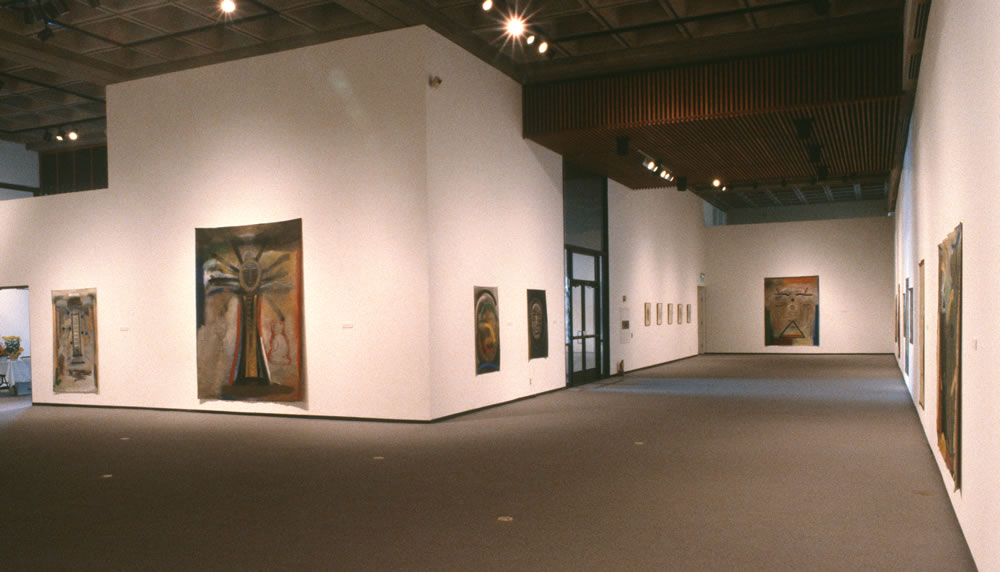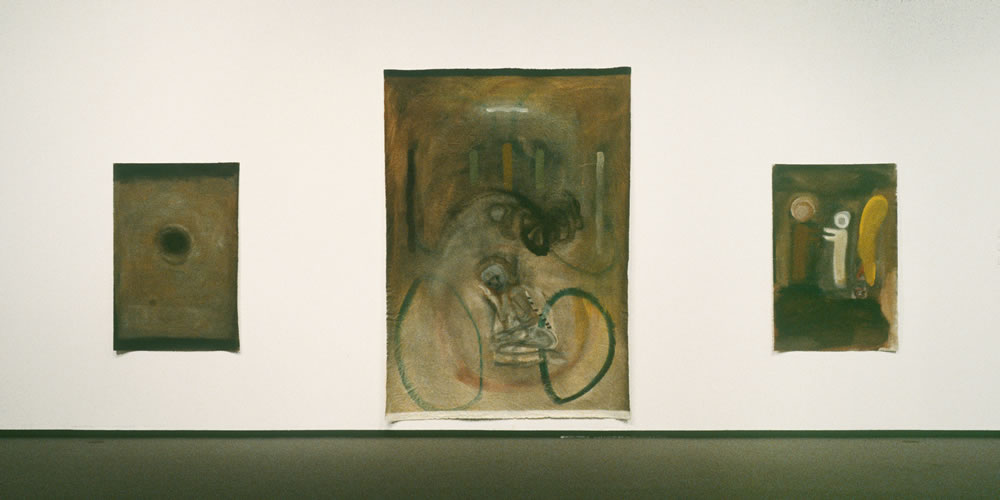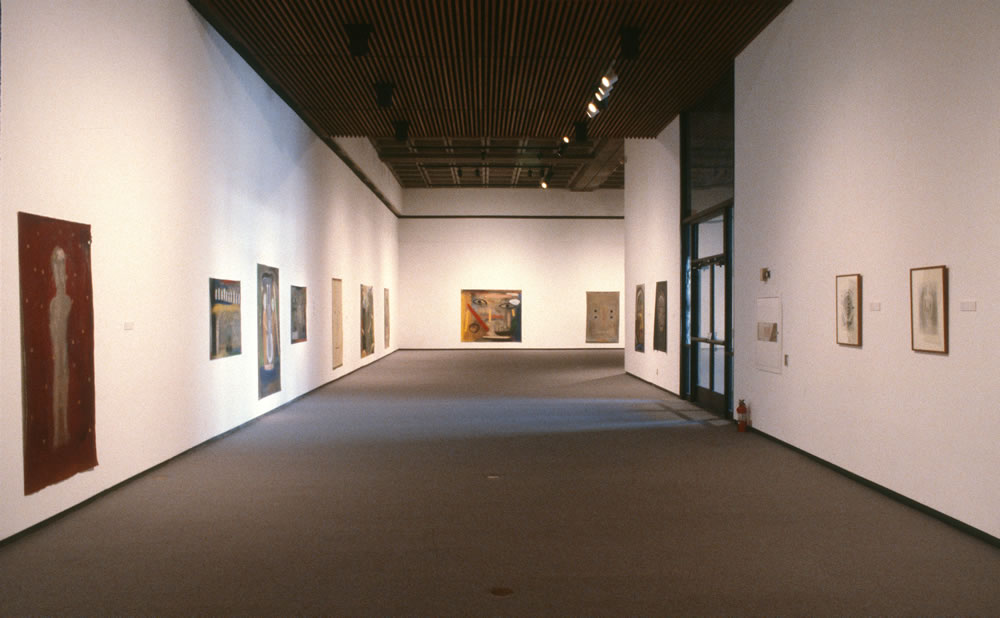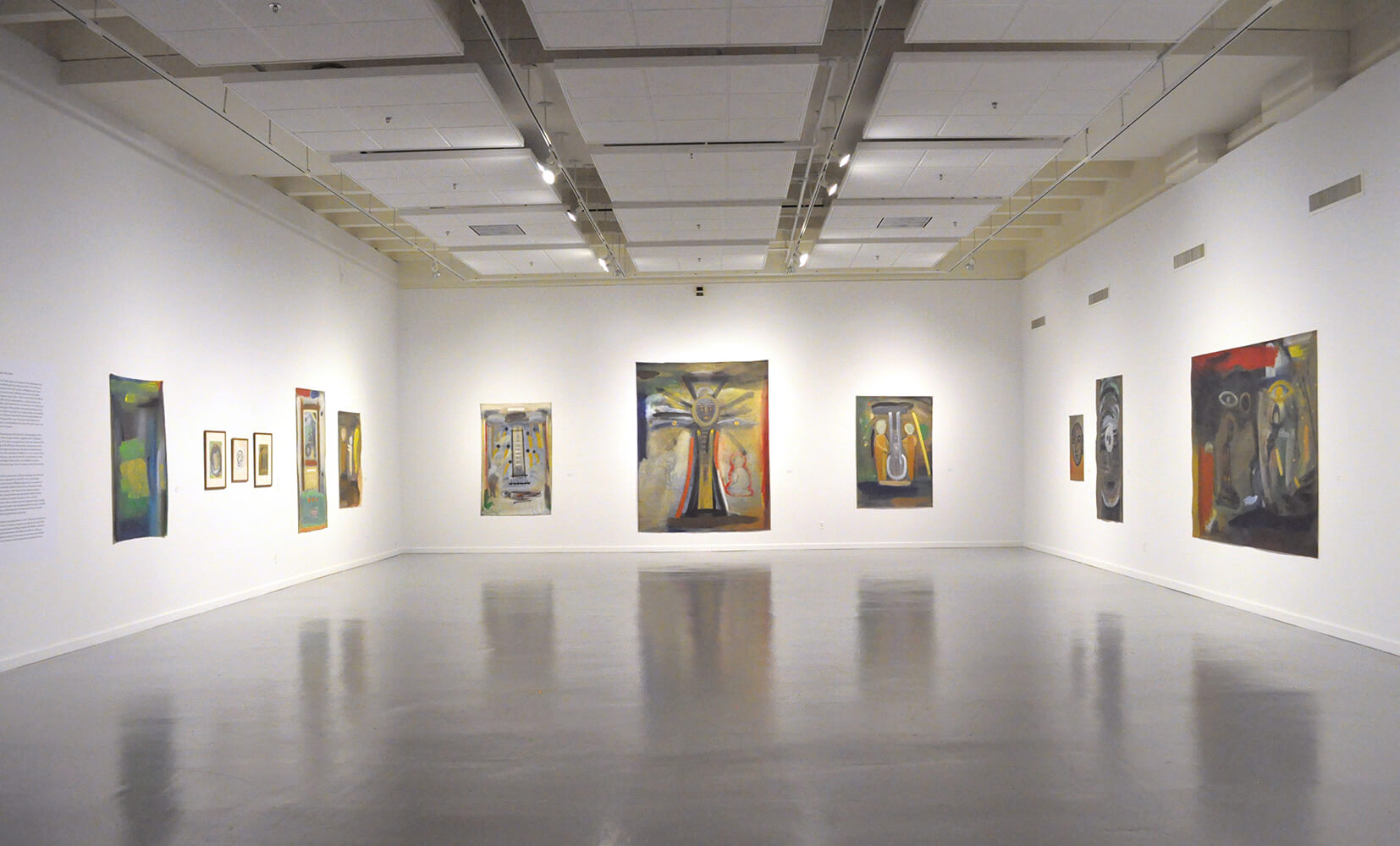
Solace in Painting: Reflecting on a Tumultuous Century
The Gallery at UTA, University of Texas
February 4-March 29, 2025
UNO Galley, University of Neraska
September 2-October 31, 2025
Solace in Painting: Reflecting on a Tumultuous Century explores the foundational issue of how to characterize the artwork of conflicted artists of the Asian diaspora when the artists themselves never produced overt “conflict art.” One step, exemplified by this show, is to raise public awareness of these artists, which the exhibition does by examining the lives of three little researched diasporic painters: (Japanese characters here) Keisho Okayama (1934–2018), (Japanese characters here) Chao Shao-an (1905–1998) and Ann Phong (b. 1957).
Abbreviated from a quote by Okayama, the term “solace in painting” points us toward the connection between these remarkable individuals — implicitly posing the question: how did their artwork offer solace from and provide a space for grappling with difficult questions of conflict and identity? And, in the face of work that obscures connections to the life of the artist, how can we as viewers understand the relationship between life and art in a way that is non-exploitative and remains grounded in celebration of the artwork itself?
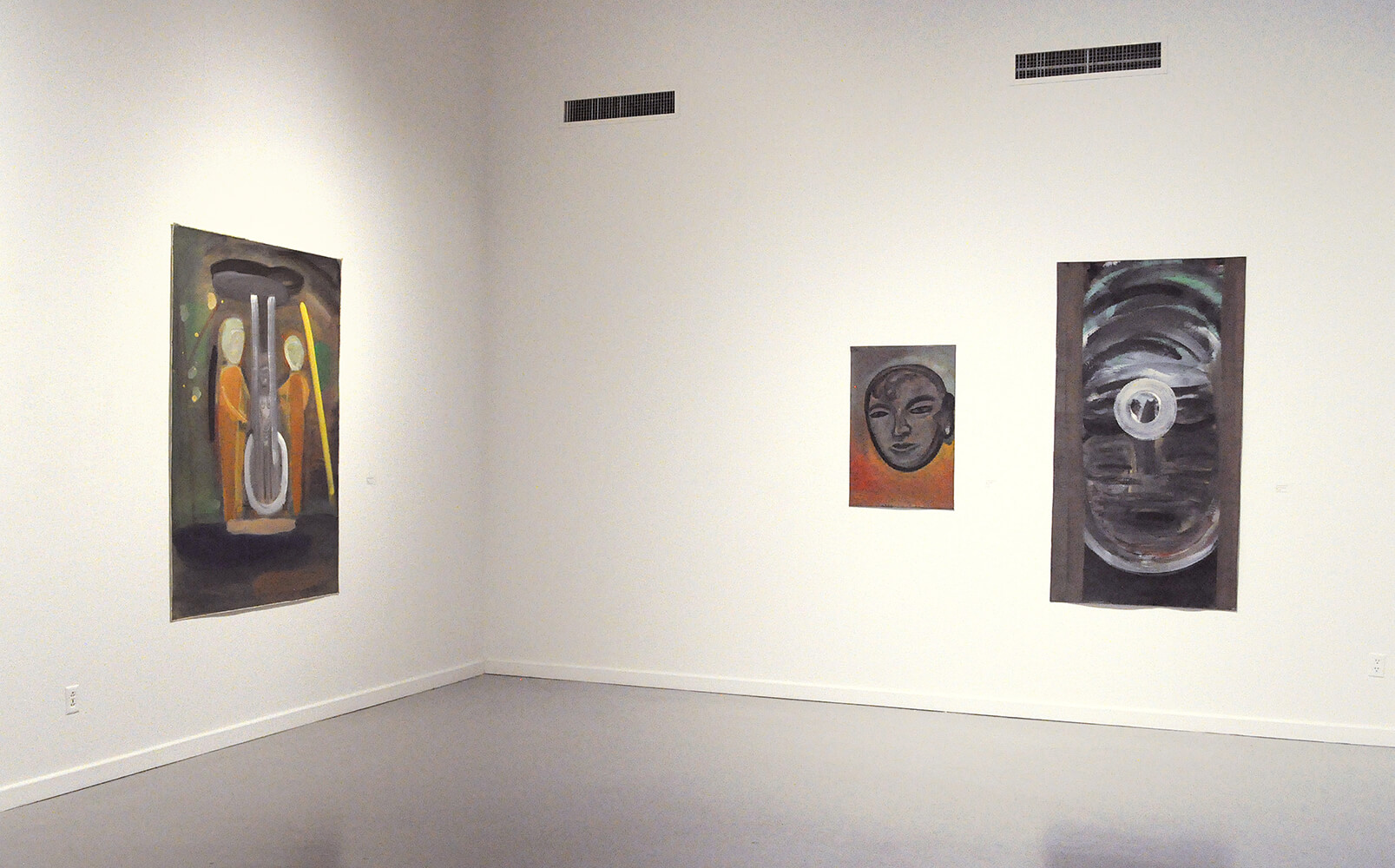

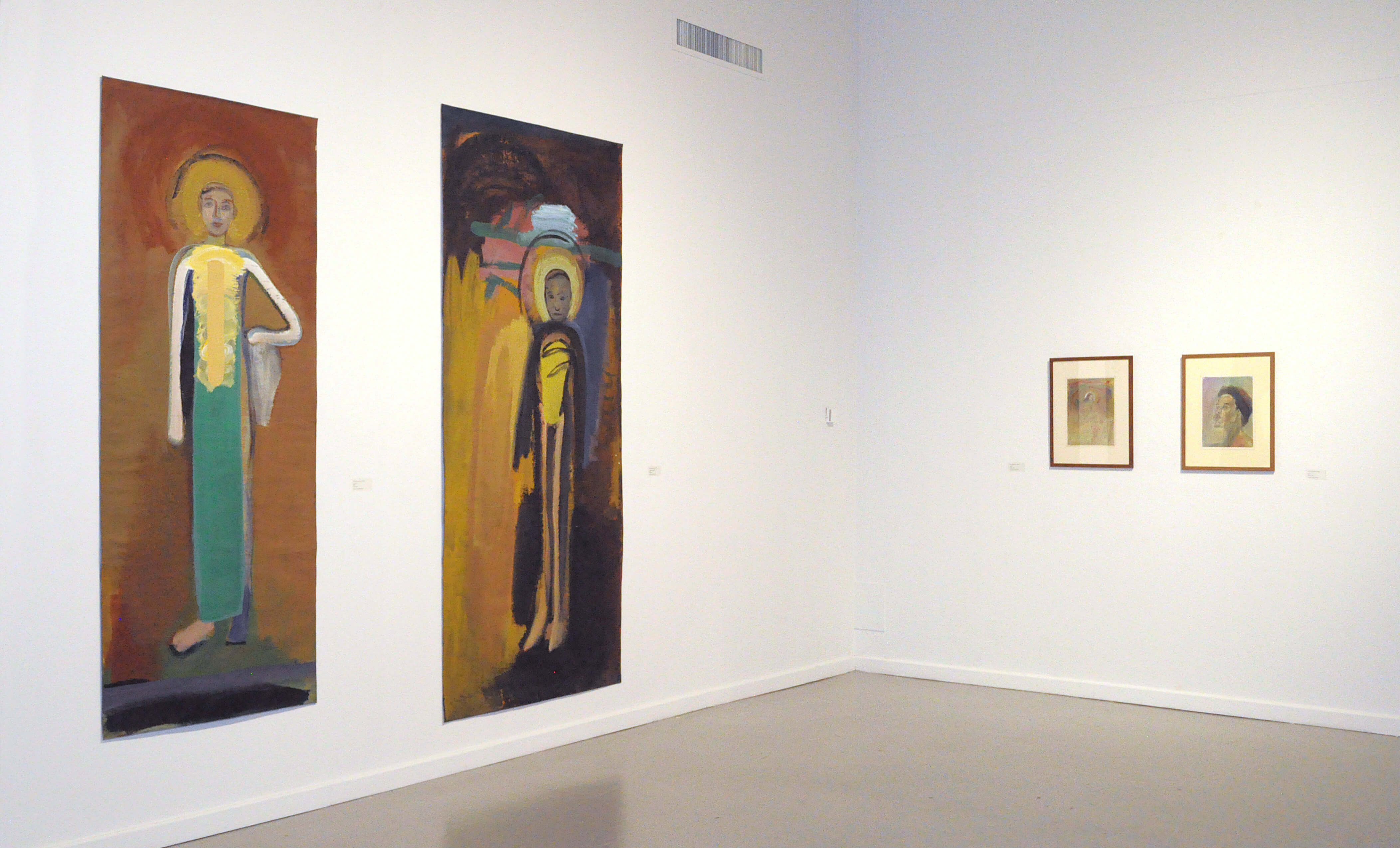
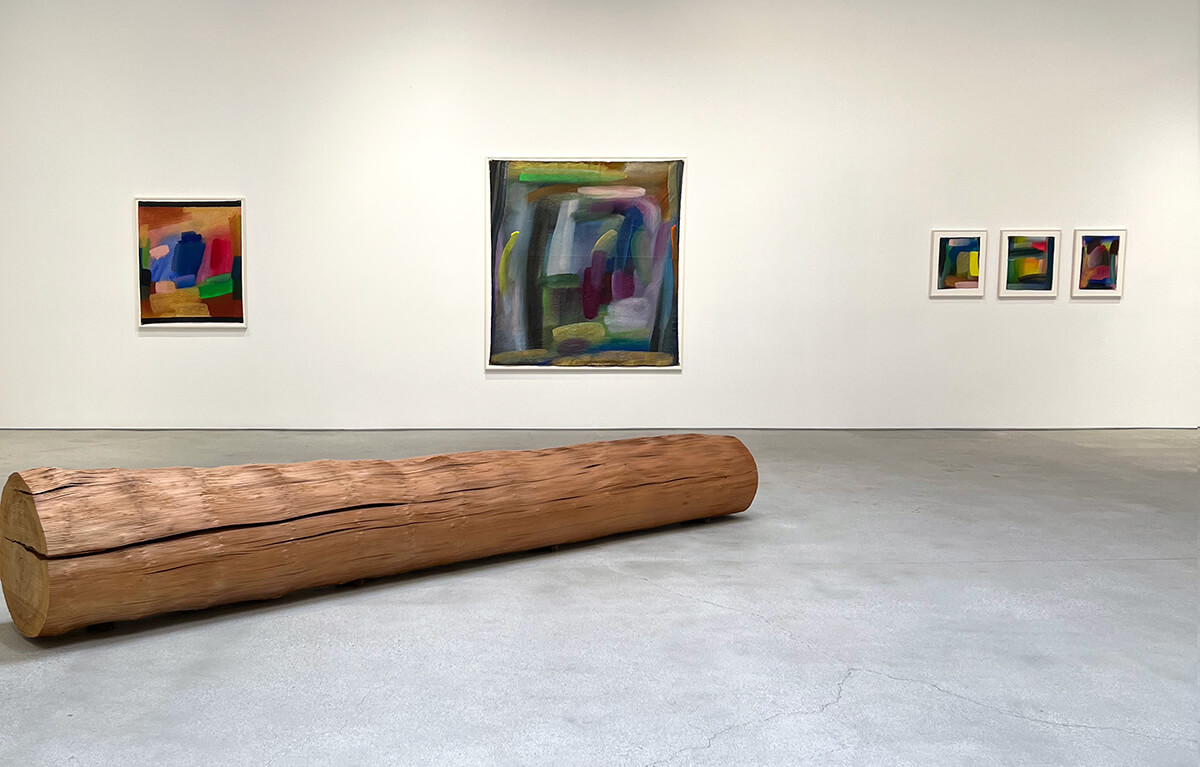
Pacific Abstractions
Perrotin Gallery, Los Angeles
September 20 - November 9, 2024
Perrotin Los Angeles opened its fall 2024 season with Pacific Abstractions. Curated by Senior Director Jennifer King, and featuring works by Naotaka Hiro, Kazuo Kadonaga, Lee Bae, Yunhee Min, Keisho Okayama, Park Seo-Bo and Shim Moon-Seup, Pacific Abstractions proposed a fresh art historical view on contemporary abstract art, focusing on the transpacific artistic dialogues between Asia and the West Coast. By bringing together artworks by Asian and Asian-American artists practicing on both sides of the Pacific, the exhibition celebrated the local and global artistic connections occasioned by Perrotin’s recent expansion to Los Angeles. Link to the exhibition website is here.
In the paintings of Okayama, “the colors appear, from a distance, unmoored, like they are floating off the canvas. A ghostly swish of orange hovers over a fuchsia wash. This effect changes the closer you get: Move in, and you start to see ridges and creases preserved by the plastic of the acrylic. Okayama prewashed but did not prime his canvas, which led to these wrinkles and made his otherwise ephemeral artworks feel so much more tactile.”
Catherine G. Wagley, Art Basel Miami Beach Magazine, 2024
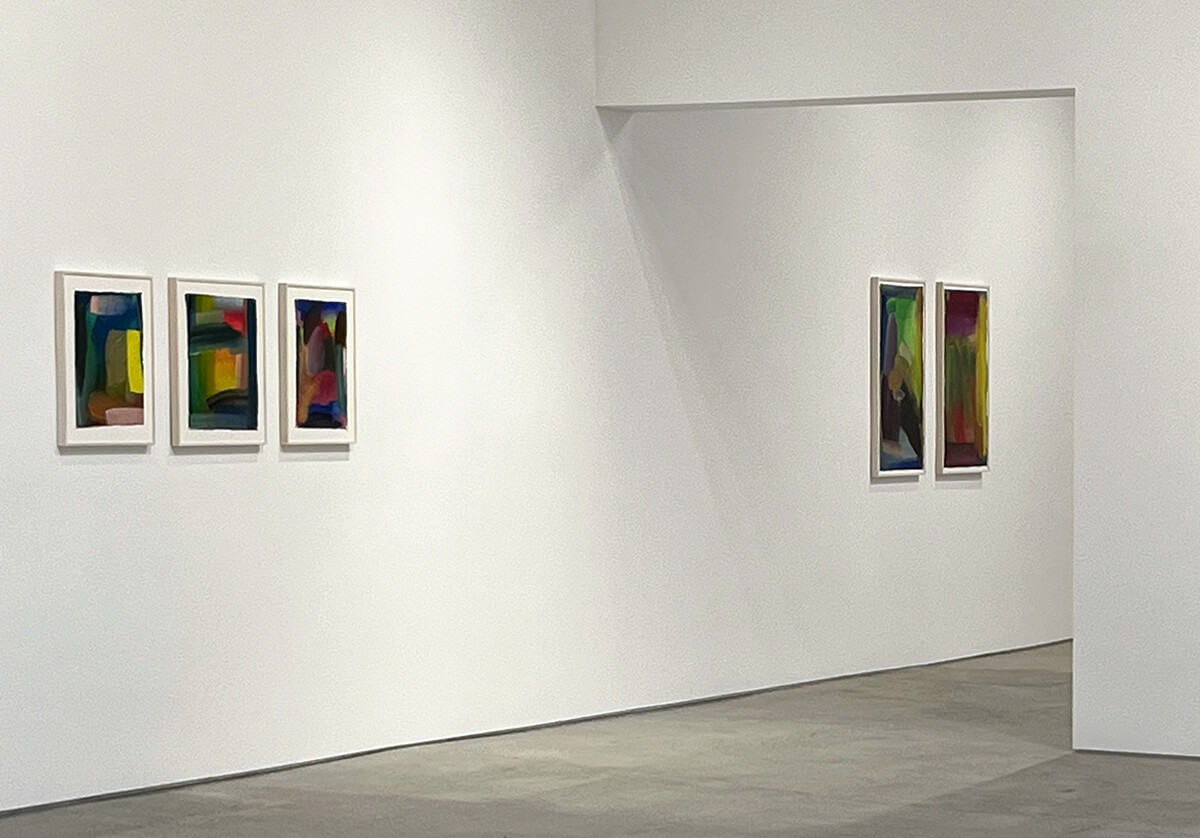
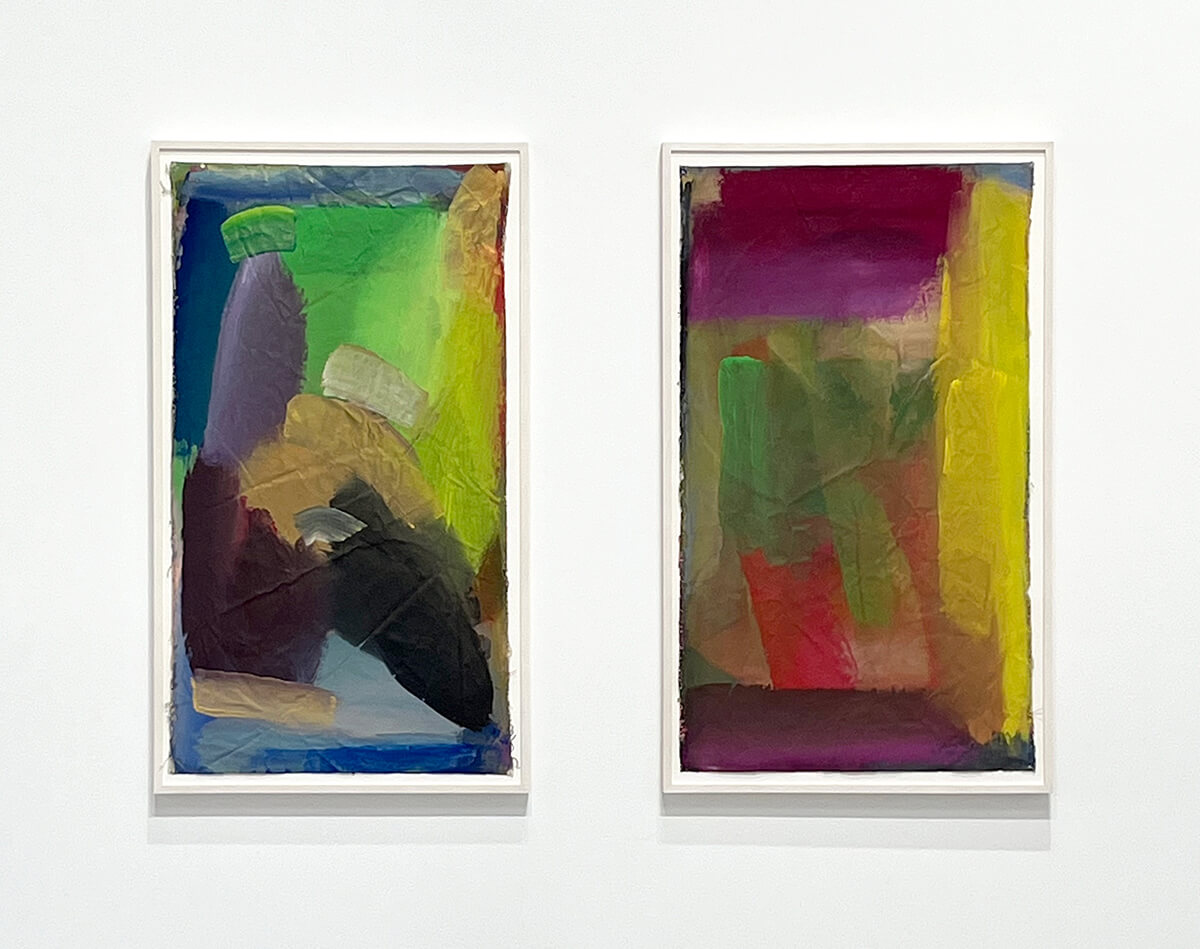
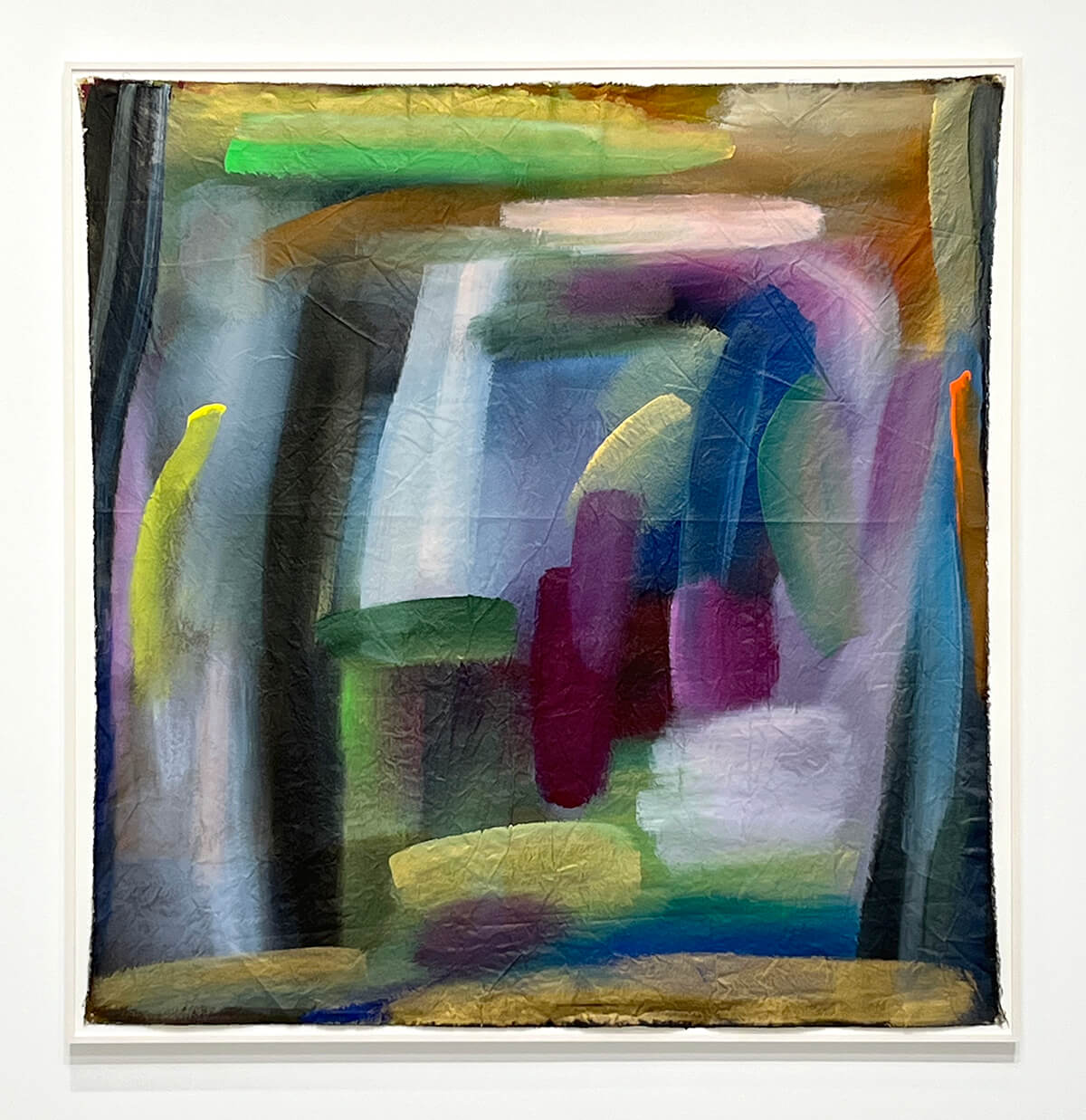

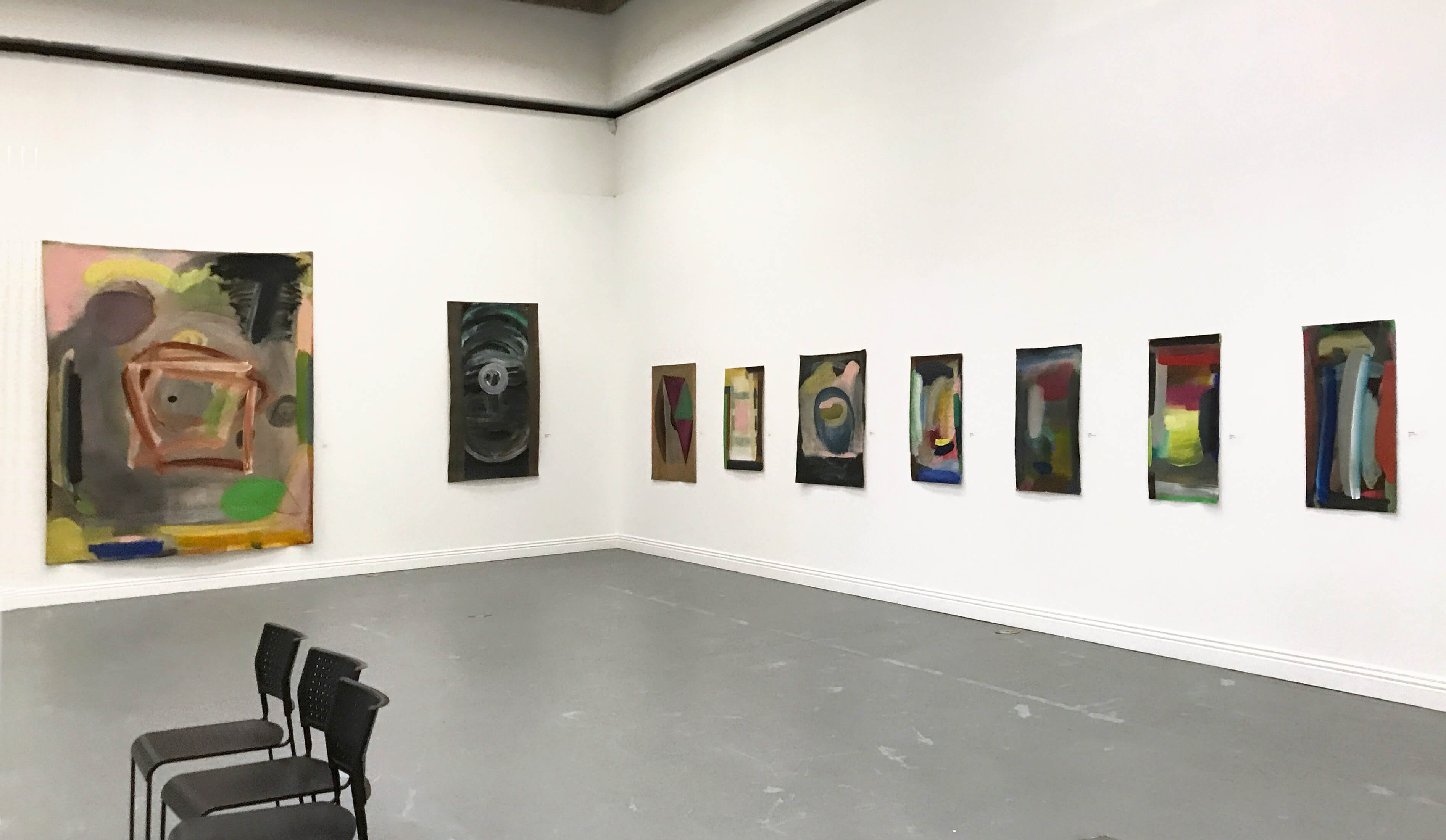
Keisho Okayama: Selected Works
Japanese American Cultural and Community Center (JACCC)
May 6-June 17, 2023
In 2023, the JACCC hosted a solo exhibition of Keisho Okayama’s paintings, drawings and objects. The featured works were created from the 1970s to 2017. Okayama’s paintings and drawings bridged the worlds of abstraction and figurative observation. With a highly personal color palette and sense of space, he emphasized the spiritual and subconscious. Also shown was a wall of drawings – later labeled “composite mediums” by Keisho’s widow, Lauren. These were old watercolors and drawings that Okayama over painted and re-purposed, creating idiosyncratic and mysterious images. It was the first time so many of these composite mediums had been shown at once. A glass case featured objects that he created for the Senshin Temple Kinnara Gagaku group: Bugaku masks, hirichikis (flute-like instruments) and their boxes. A video above the display case showed a performance of Kinnara Bugaku, for which Okayama created the masks.
Hirokazu Kosaka, JACCC’s Master Artist in Residence and exhibit curator, said, “Okayama represents a unique perspective among Japanese American artists during an explosion of U.S. postwar creative experimentation. He is part of our artistic heritage.”
Image at top: Paintings from 1995-2012, all acrylic on canvas.

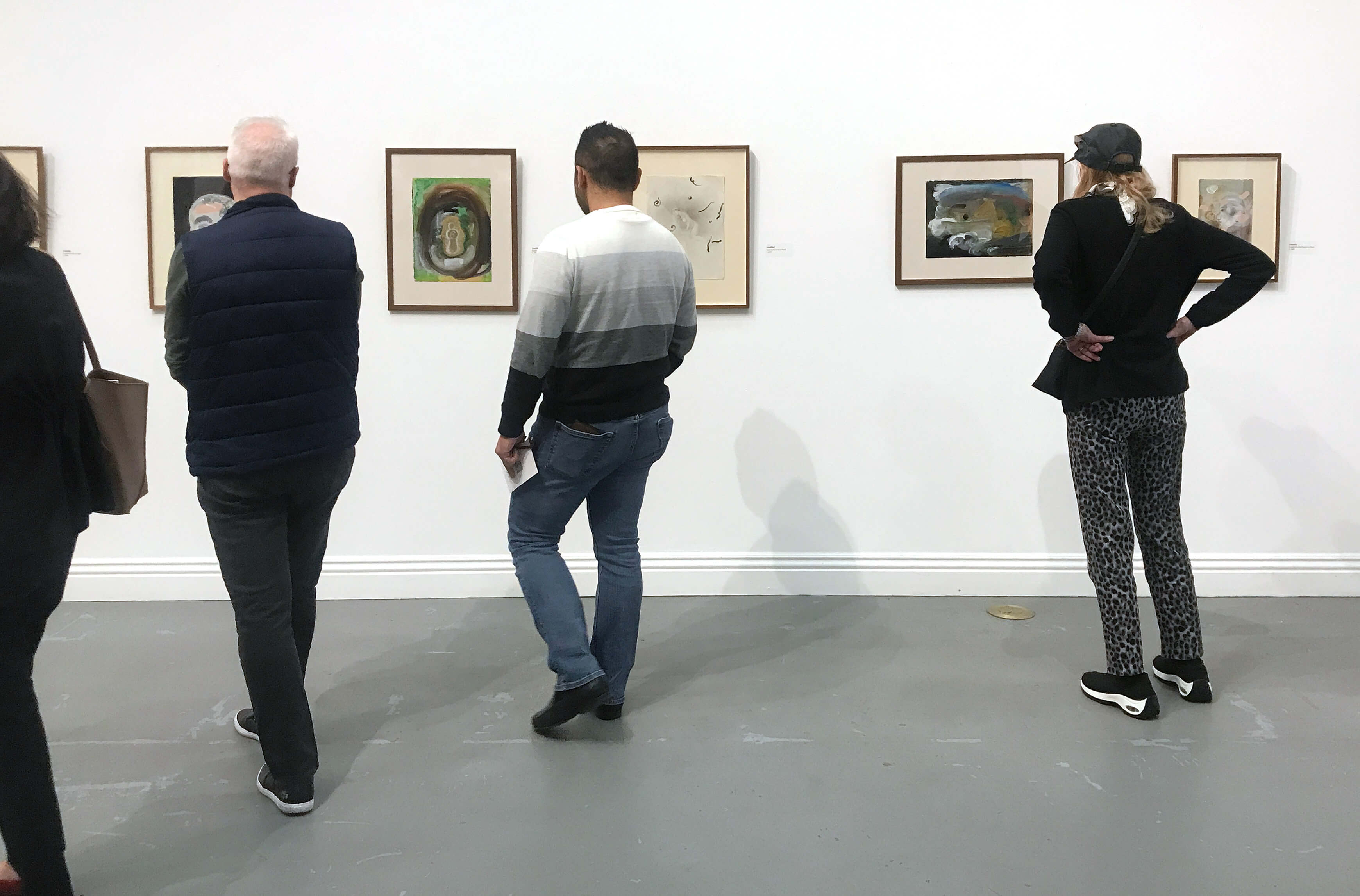

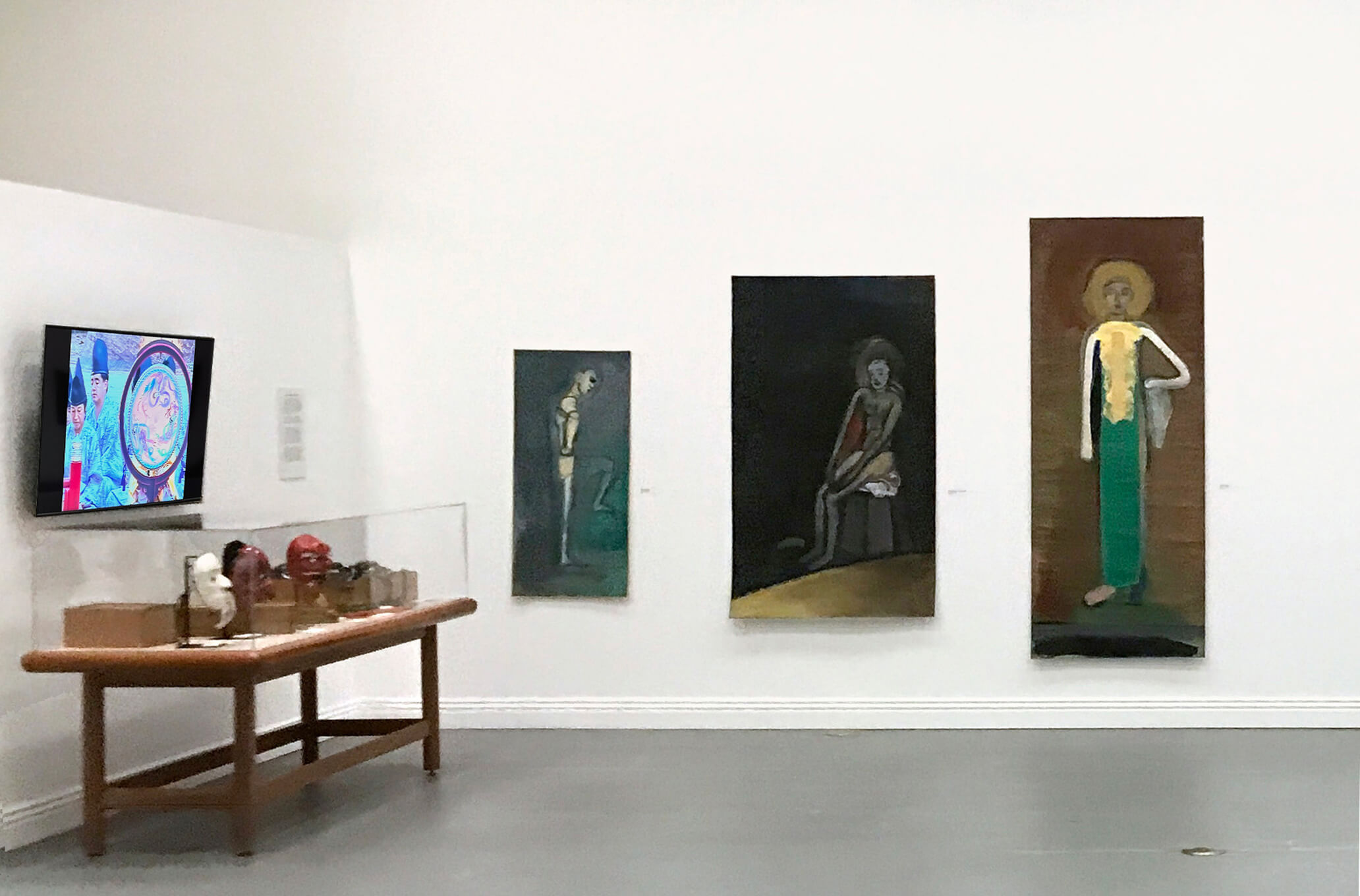
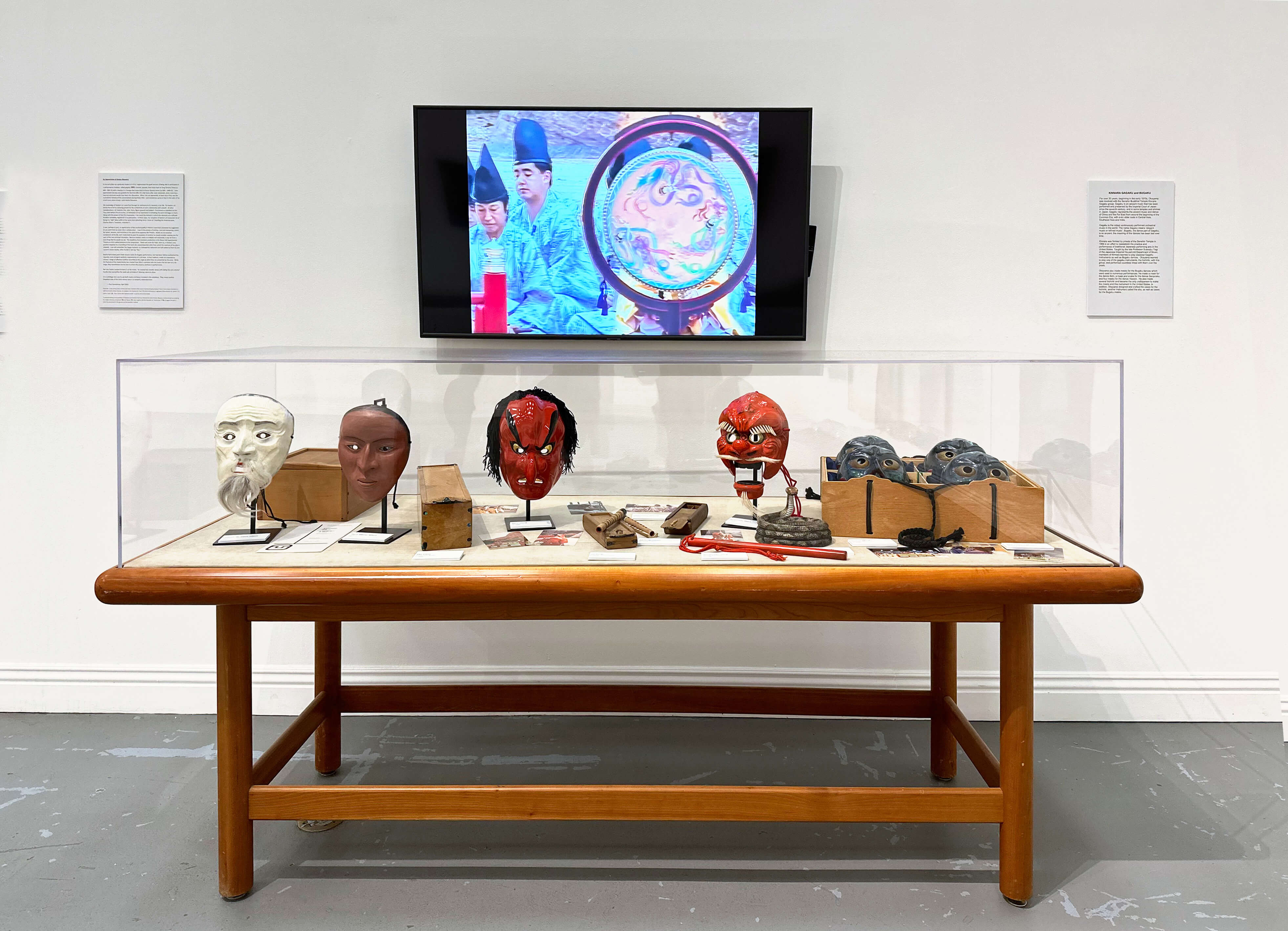
Keisho Okayama: Recent Work
FIG (First Independent Gallery)
April 20-May 21, 2016
“My paintings are about how color and the brushwork interact to create an intimate and harmonious pictorial space. I have no preconception as to what I am about to paint. I simply start painting and assume that the painting will resolve itself in the process.
“Nature has always been an abiding inspiration and influence in my work. However as an artist, I cannot discount all the experiences that one encounters in life, the art works in history that I have seen, and the fact that I was born in Japan must certainly enter in. I am so grateful to have painting in my life, because the act of painting tends to dispel my feelings of insecurity and anxiety that frequently cloud my consciousness.”
– Keisho Okayama, 2016
Following are Installation shots of the show:


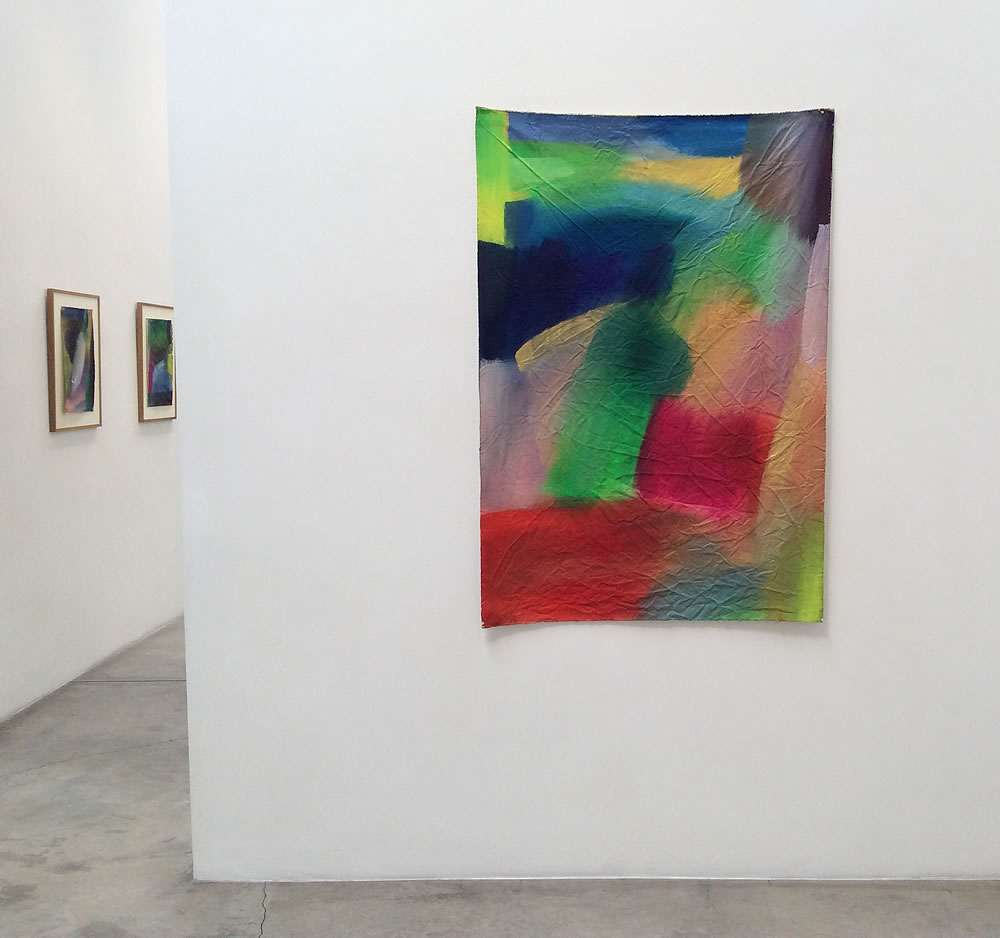
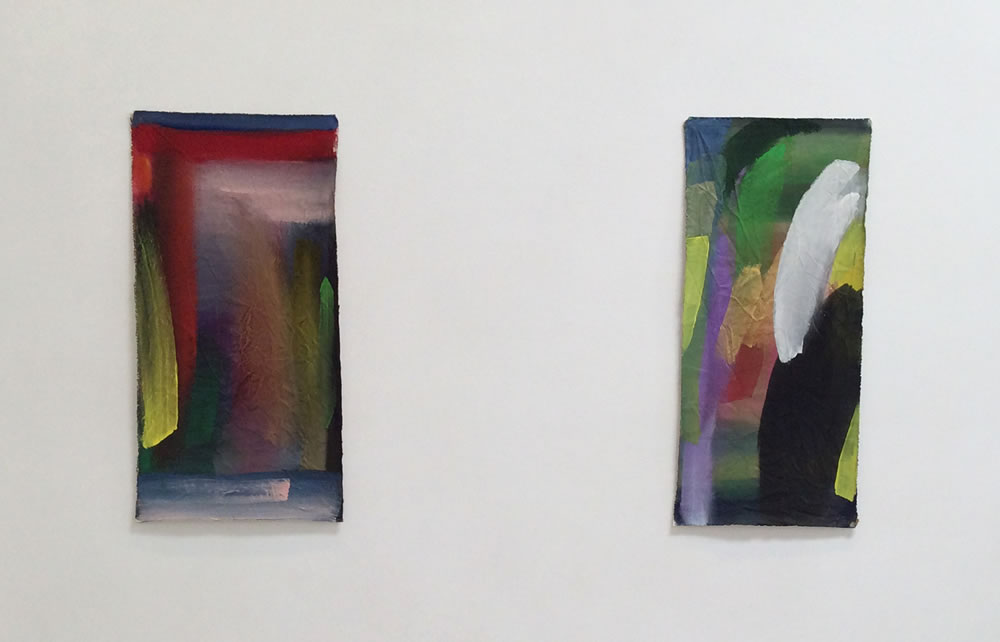
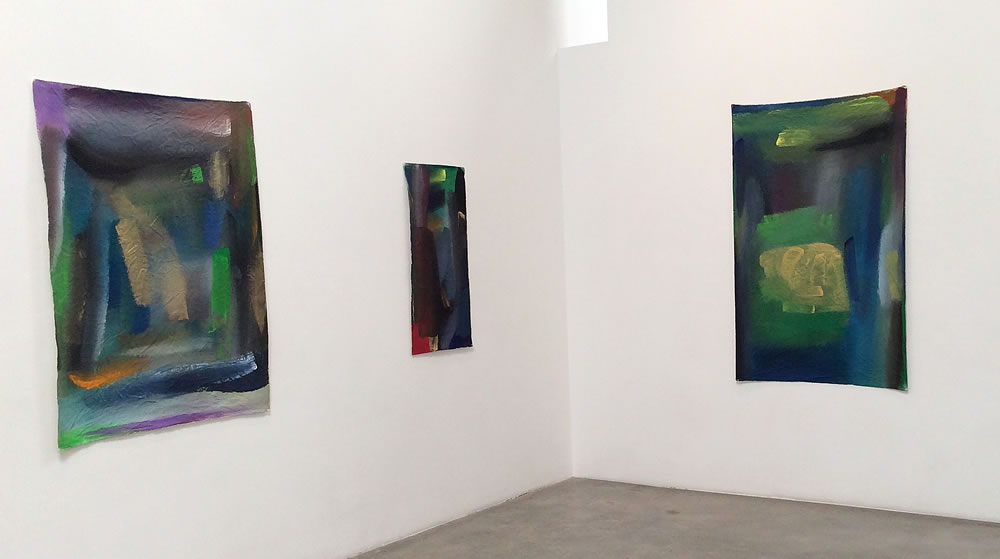
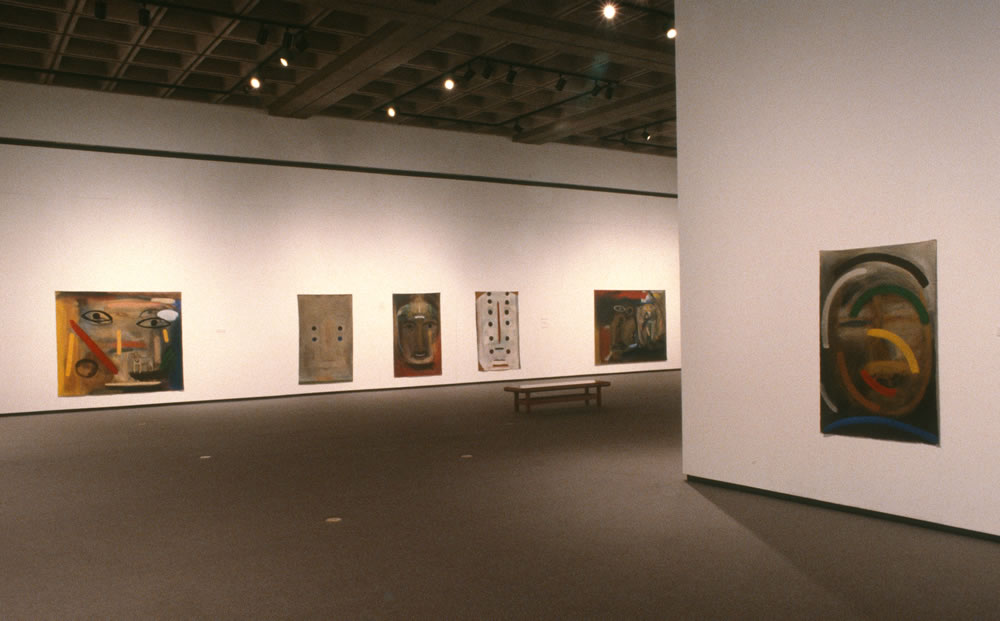
Keisho Okayama: Zenkai and Tatsuko,
A Gift of Transmission
Japanese American Cultural & Community Center
December 8, 1990 to January 27, 1991
“My paintings are finally at home here at the Japanese American Cultural and Community Center. This show relieves for me the anguish of the many years of alienation from the country of my birth and of so much confusion and guilt about my sense of obligation to its culture. Having lived in this country since the age of two, I am a Japanese American. Inherent in that classification, however, is a dichotomy of values which cannot be dealt with, at least, at the more profound levels of one’s psyche, without enormous stress. There is a reason why the JACCC is called a cultural and community center. I am sure that its directors know well the reasons why, but also know equally well of the problems created by such delineation. Cultural, of course, means Japanese, and community must mean American. To be an American means that one is essentially multi-cultural, and any attempt to posit a specific cultural identity then creates a stressful dilemma.
“I have sub-titled my show ‘From Zenkai and Tatsuko, a gift of transmission’. I wish to make clear that my parents’ gift of transmission to me and my brothers was not cultural in that large imposing sense of culture but a transmission that resulted from the daily intimacies of our lives – in the unadorned living out and the natural unembarrassed exposure of their strengths and weaknesses that only intimacy will allow. It is a gift that has required time for me to accept, but in its acceptance it has allowed for me a freedom beyond the constricted confines of the usual cultural context. Surely, it is that fundamental intimate linkage with other human beings that serves as a basis for art and culture. If my paintings are truthful, they should give evidence of my conflicting dualities, but hopefully resolved in a matrix of intimacy.”
– Keisho Okayama, 1990
Following are Installation shots of the show:

